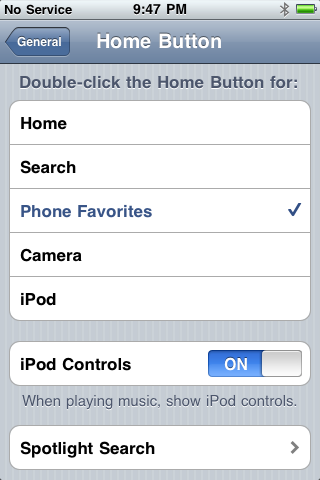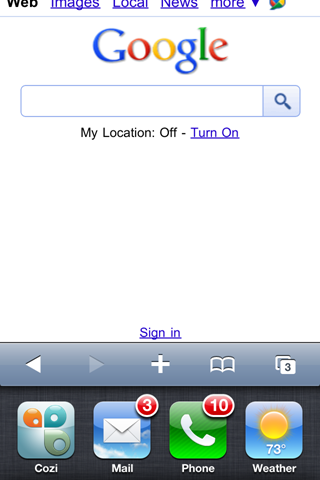iOS 4 Home button double-click: Rare case of retiring a behavior preference
Like a lot of iPhone users, I was surprised that Apple changed the behavior of double-click the Home button in iOS 4.0. That action had previously taken the user to a user-selected favorite application, which by default was the Phone application. On a phone with a tiny number of hardware buttons, having a fast way to actually make a phone call seems like a good idea. In iOS 4.0, this double-click action was redefined to invoke the task switching UI:


In iOS 3.x (left), double-clicking Home was customizable; in iOS 4.x
(right), it invokes the task switcher
I happen find the new behavior fine, and find a use for it many more times a day than I did the previous behavior. Some number of users, however, howled when they upgraded their phones and found a favorite feature was missing. Apple essentially took a feature away, an occasion so rare in software design that I can only think of a handful of cases in more than twenty years where I’ve done it myself.
Regardless of what one thinks about Apple’s decision, I’m impressed by their resolve to retire the old behavior. Features tend to live forever, sometimes out of all proportion to their utility. It’s usually cheaper to keep things than get rid of them, and as this case shows, every feature has at least some number of users that will be inconvenienced and upset if the feature were to be removed. Some of the most passionate of those feature users may, in fact, work on the team that make the product, and those people serve as advocates to ensure the conservation of old features.
Usually, the tendency to conserve features is so strong that old features are usually buried as settings, rather than eliminated entirely. When Microsoft finally fixed the behavior of the Insert key in Microsoft Word, it still preserved the old behavior as a behavior preference. Here it would presumably have been trivial for Apple to keep the old behavior by simply folding the new behavior into the very configuration UI it replaced. That is, the list in the image on the left above could have been extended with a new option to “Switch applications”, and that option could have been made the default. Given the low cost of doing that, Apple’s decision to retire the old behavior is even more impressive—or, depending upon your point of view, more reprehensible.
The complexities of preserving such behavior preferences in perpetuity is one of the many reasons I personally try very, very hard to avoid introducing them in the first place.
Side note: This week I'll be at UX Week 2010 in San Francisco. If you're coming, it'd be great to meet up. Send mail to jan at cozi dot com.